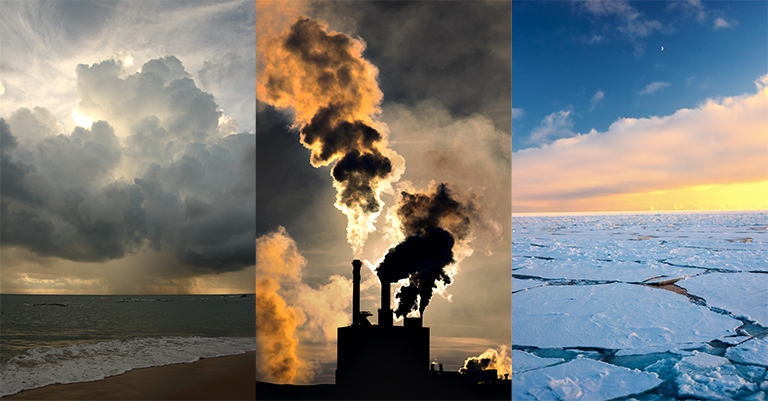
(Photo by Nasa)
Trump’s appointee to lead the Environmental Protection Agency, Scott Pruitt, is a controversial pick, specifically for his denial of the evidence for man-made climate change. In an article he had written for the National Review, he argues that the data backing climate science is uncertain and that there is a reasonable belief that climate change is a result of scamming scientists and not a result of human action. As an attorney general he even sued the E.P.A. for its involvement in President Obama’s Clean Power Plan.
As climate change gets debated in the public sphere, with many diverging opinions, we hear two separate distinct phrases: ‘global warming’ and ‘climate change’. First we have to define what it is we are talking about when we use terms like these.
Global warming was a term used to describe the changes of the atmosphere and weather patterns that would result in a gradual increase in average temperatures. However, this phrase has fallen out of fashion as science shifts from the idea of ‘global’ warming.
As complex systems interact, some parts of the world are predicted to get much warmer, while others will get cooler, so the term ‘global warming’ is inaccurate. There is still a prediction of overall warming, but its effects won’t be seen everywhere equally.
Another definition that is necessary to understand is ‘climate’, and its difference from ‘weather’. Weather describes the conditions on a day to day basis, while climate is a long-term pattern based on average temperatures, pressures, and moisture levels.
The real issue is not the definition, however, but whether or not climate change is actually happening the way most scientists claim.
Many scientists suggest humans are the real cause behind climate change because of pollutants, such as methane and carbon-dioxide, that are released when we burn fossil fuels. These pollutants absorb the sun’s energy, which either slows or entirely prevents the release of Earth’s heat back to space. This retention of heat causes average global temperatures to rise in a critical feedback loop that will displace large populations of people and wildlife with wilder weather, hotter temperatures, and rising sea levels.
Some rebuttal to these theories has been rising recently as certain groups suggest that temperature increases are part of Earth’s natural cycle. This cycle is influenced by solar changes from sun spots which shift from solar maximum to solar minimum.
The problem with this explanation is that the eleven-year cycle of the sun is much shorter than the global warming trend. The scientists who found this trend, Charles D. Camp and Ka Kit Tung, found it by averaging out white noise in the data from volcanoes, strong El Niño trends, and climate change.
Additionally, the cycle Camp and Tung discovered only accounts for a 0.18 degrees Celsius fluctuation. Predictions made by various computer models have also caused controversy over the accuracy of the predictions. The Global Warming Policy Foundation has accused climate scientists of deliberate interference with raw data and temperature records, although this group was explicitly founded to refute man-made climate change.
For the sake of full disclosure, as an environmental science major, I think climate change is the biggest problem facing the developed world. I recognize that I have biases between the sources I consider credible and which ones I don’t, but that is why I ask people to do research on their own. Fact check and check the sources where those facts came from.
Based on information about rising ocean levels, doubled global levels of CO2, unprecedented loss of arctic sea ice, and climate records observed from tree and ice core samples, it is evident caused an disruption in our vital natural systems. A new way of manufacturing and producing energy needs to be prioritized by scientists, businesses, governments, and society alike.

